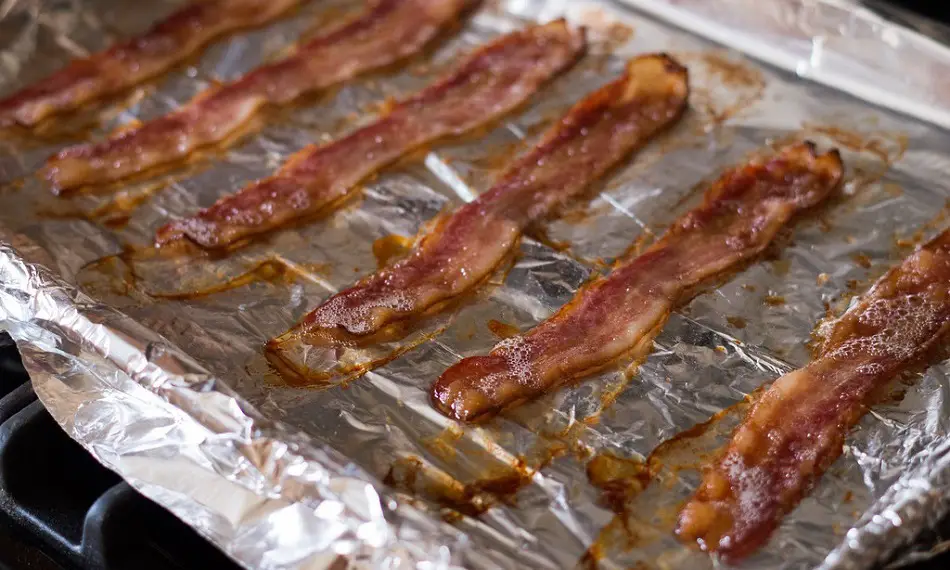Bacon is a staple in many American households. Often people associate it with a thin, crispy slice of meat, but does it have to be prepared this way to be safe?
Bacon can be fully cooked even if it’s not crispy. As long as the meat is cooked to an internal temperature of 145 degrees, it is safe to eat. Bacon cooked more slowly over lower heat will remain flexible when fully cooked versus getting crispy when cooked over high heat.
Let’s look further into how to tell if your bacon is done and how to prepare it so it is more chewy than crispy!
Does Bacon Have To Be Crispy? Is Bacon Cooked If It’s Not Crispy?
So as we already saw, bacon does not HAVE to be crispy to be “done.” Many people prefer bacon to be crispy, but a thicker slice of chewy bacon is my personal “ideal bacon!”
To be fully cooked, bacon must be cooked to an internal temperature of 145 degrees Fahrenheit. This can be hard to measure because the meat is too thin to insert a meat thermometer. Because of this, the appearance of the meat is used to determine if it is done.
Related Content: How Do You Cook Bacon On A Press? How Do You Use A Bacon Press?
So the next logical question…
What Does Cooked Bacon Look Like?
The best way to determine if bacon is fully cooked is to look at the color. The meat portions will turn from pink to a reddish-brown color, and the fat areas will change from white/creamy to a golden brown color.
Here are some pictures for you to reference to determine if your bacon is cooked.
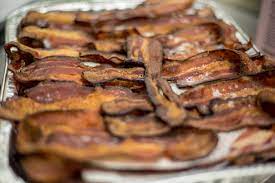
Burnt Bacon 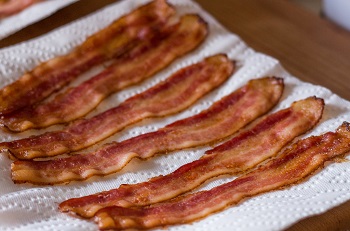
Fully cooked bacon 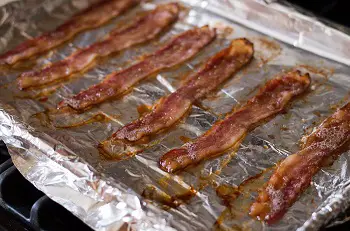
Chewy bacon 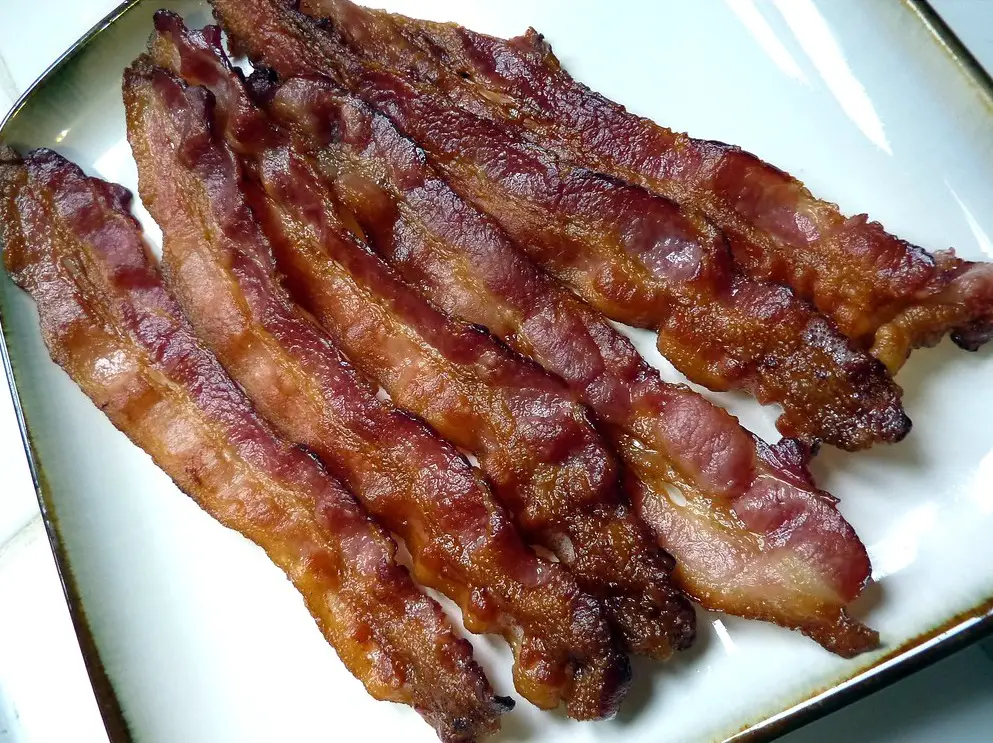
crispy bacon 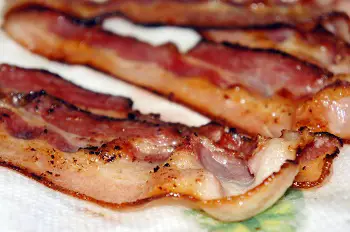
Fat undercooked bacon (^white) 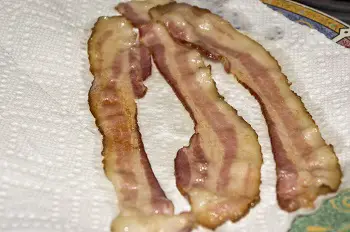
Generally undercooked bacon
Related Content: Can You Cook Eggs In Bacon Grease?
Can Bacon Be Undercooked?
Bacon is not safe to eat when undercooked, which is possible. Undercooked or raw bacon will be pinkish in color in the meat areas and white or cream in the fatty areas. Uncooked pork can still contain parasites or bacteria which cause illness. The USDA recommends cooking bacon to an internal temperature of 145 degrees Fahrenheit to ensure safety.
How Do You Make Bacon Not Crispy?
There are two main ways to cook chewy (not crispy) bacon: cook it in a moist environment or at a low temperature.
Adding additional oil or fat to the meat while cooking, covering the pan while frying, or coving your meat with foil if baking in the oven are all options to maintain moisture in the meat. Also, cooking bacon in the microwave will retain the moisture and result in chewy, not crispy bacon.
Cooking it slower at a lower heat and ensuring the meat has warmed slightly prior to cooking (rest on the counter for 15 minutes) will also help maintain moisture in the meat.
For example, if you bake bacon on a baking sheet at 350 degrees Fahrenheit, the meat will remain in its own grease while cooking and cook more slowly, which will result in a chewier, more flexible piece of bacon. You can also cook over low-medium heat on the stovetop and remove from the heat to rest prior to eating.
Can You Eat Bacon Without Frying It?
You can eat bacon without frying it in a frying pan! You can cook it in the microwave, bake it in the oven, use a slow cooker, use an instant pot, or use an air fryer. There are many recipes available for each of these options. As long as the meat reaches an internal temperature of 145 degrees Fahrenheit, it is safe to eat (this is determined based on appearance due to the thinness of the meat not allowing the use of a meat thermometer.)
More Bacon Information
I’ve written a lot of information about bacon. If you are interested in seeing all my bacon-related articles, click here.
So there you have it- you don’t need to cook bacon until it’s crispy! If you have never tried a slice of slightly chewy bacon, I HIGHLY recommend giving it a shot! SOOO GOOD!
Now it is time for YOU to get Crafty with Ashy!

